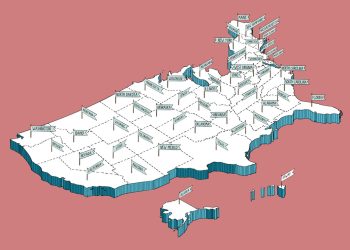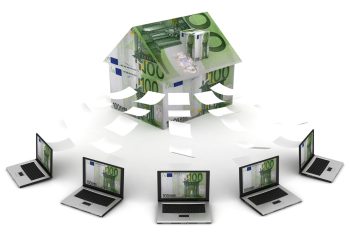This information has been provided by Center for REALTOR® Development and has been adapted and reprinted with permission from the Summer 2017 issue of On Common Ground, a free, semi-annual magazine published by the National Association of REALTORS® (NAR) that presents a wide range of views on smart growth issues, with the goal of encouraging dialogue among REALTORS®, elected officials and other interested citizens.
With consumers showing growing interest in green living, REALTORS® are striving to support the green real estate market by capturing and conveying the benefits of sustainability in more meaningful and measurable ways.
“One of the things I’ve learned is you just can’t keep throwing around the word ‘green,'” says Rick Thompson, a REALTOR® and co-owner of Bright Leaf Homes, a home builder specializing in sustainable construction in the Chicago suburb of LaGrange. “If everything is considered green, nobody thinks anything is green. It becomes a hollow claim.”
Thompson is one of nearly 3,500 REALTORS® who hold NAR’s Green Designation through an NAR program that provides advanced training to help REALTORS® seek, understand and market green properties—skills that can unlock the value of sustainability and provide a competitive edge in the marketplace.
Energy efficiency is the most marketable benefit of sustainability. “That’s something that can be quantified and people can wrap their heads around,” Thompson says.
The Home Energy Rating System (HERS) Index and the Home Energy Score (HES) are recognized by the Department of Energy, the Environmental Protection Agency (EPA) and the Department of Housing and Urban Development (HUD) as a gold standard for quantifying a home’s energy efficiency.
The HERS Index was created by the Residential Energy Services Network (RESNET), a nonprofit organization that helps homeowners make their homes more energy-efficient through a variety of services. It generates a score relative to the size, shape and type of any given home. The lower the HERS score, the more energy-efficient the home is. A score below 100 means a home is more energy-efficient than a comparable home built in 2006, and a score above 100 means it’s less energy-efficient.
“I compare it to a miles-per-gallon sticker on a car,” Thompson says. “If you’re buying a car, you can see how efficient the car is. Why not try to when you’re looking for a home?”
Providing a HERS Index Score can make a green home more sellable if it shows the home is less expensive to live in, Thompson says.
Energy efficiency and other green selling points need more visibility at every step in the sales and marketing process, Thompson says. “A big part of NAR’s Green Designation is to help push education about green homes to consumers, appraisers, lenders and other real estate professionals and get green information at the forefront of MLS listings where all the great features and benefits” are plain to see, Thompson says.
MLS listings come in various shades of green. NAR developed a template to help REALTORS® encourage more multiple listing services to include a wider range of green features in their standard data fields.
The Appraisal Institute, a professional association in Chicago, offers a Residential Green and Energy Efficient Addendum that sellers can use to document green features and improvements.
One green metric that is already ubiquitous across the MLS ecosystem is WalkScore, an online easy button that rates homes on their proximity to stores, restaurants and parks and the ease of walking to them.
Some listing sites are already incorporating scores or information that inform buyers about a property’s readiness for solar panels. Other sites are including home performance data through scoring. As the demand for energy information continues to grow as an asset in the home-buying process, it is possible that an “easy button” for energy ratings could appear on listing platforms in the future.
Doug Miller, a senior associate with the Rocky Mountain Institute (RMI), a nonprofit based in Basalt, Colo., advises REALTORS® to build a network of green-certified contractors, appraisers and other real estate professionals to help them provide clients with the advice and services they need to maximize the benefits, valuation and marketability of a sustainably-built home. REALTORS® should also encourage sellers to disclose their utility bills even if the bills are high, Miller says.
“It’s a proxy for transparency that demonstrates the seller doesn’t have anything to hide…and that you’re telling them everything you know about the home.”
REALTORS® could even pay for an energy audit, either on behalf of a seller to market their home or a buyer to shed light on the total cost of ownership. “Maybe costs $300, but if that’s what they need to seal a deal with a client, it might be worth it,” Miller says.
Brad Broberg is a Seattle-based freelance writer specializing in business and development issues. His work appears regularly in the Puget Sound Business Journal and the Seattle Daily Journal of Commerce.
For more education about green homes and sustainability, check out this month’s featured designation online course bundle at the Center for REALTOR® Development, NAR’s Green Designation: Day 1 & 2 Online Bundle, which is on special for 25% off this entire month of April and is the educational requirement for NAR’s Green Designation.
For more information, please visit RISMedia’s online learning portal from NAR’s Center for REALTOR® Development (CRD) and the Learning Library. Here, real estate professionals can sign up for online professional development courses, industry designations, certifications, CE credits, Code of Ethics programs and more. NAR’s CRD also offers monthly specials and important education updates. New users will need to register for an account.
For the latest real estate news and trends, bookmark RISMedia.com.










